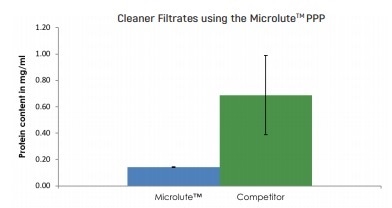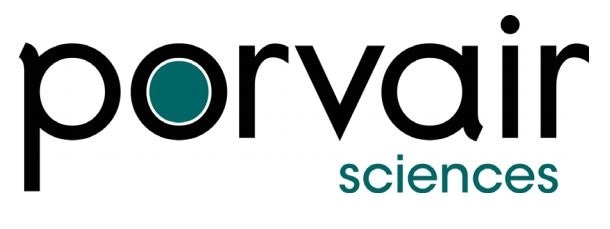Testing site™
A trial was conducted by a drug metabolism department at a leading global pharmaceutical company in order to evaluate the various commercial protein precipitation plates currently available. The trial was conducted with a view to using the best performing product and recommending it in-house to other departments.

Image Credit: Porvair Sciences Ltd
Critical factors
During the evaluation, certain factors were critical to good separations:
Filter leakage
It is important that, when acetonitrile is added to denature the sample plasma protein, it does not immediately ‘wet out’ the filter and cause leakage from the filtration plate.
Flow rate
It is majorly advantageous to have a consistent flow rate of the sample when the vacuum is applied.
Non-specific binding of the compound to the plate/filter
By nature, some filters bind analytes and so choosing a non-binding filter material is essential as it maximizes the recovery of the analytes/compounds.
Method
- Place a MicroluteTM PPP onto a suitable collection plate (Product # 219250)
- Dispense 300ul acetonitrile into each well of the plate.
- Add 100ul of plasma sample to each well.
- Mix the solutions in each well by placing the plate on a plate shaker at 500 rev/min for 2 mins
- Centrifuge at 500 x g for 3 mins to collect supernatant in a clean collection plate
Note:
Recovery of compounds was completed, allowing for the effect of ion-suppression on the samples. A volume of 100 ml spiked plasma was used. This was compared against spiked standards.
In this experiment, the recovery accounts for both the recovery of the compound from the matrix and the suppression effect on the compound due to the matrix.
- Vacuum manifold or positive pressure could be used instead of a centrifuge.
- 3:1 ratio of acetonitrile to plasma sample is required.
- Suitable for sera or plasma samples.
Results
Filter leakage
Microlute™ PPP showed no signs of leakage throughout the investigation. Three of the other manufacturers plates had significant leakage and so were ruled out at this stage.
Flow rate
Microlute™ PPP from Porvair Sciences demonstrated a consistent flow rate through the plate. Two of the manufacturers plates had significant blockages and so failed at this point.
Conclusions
After the evaluation, this department decided to use the Microlute™ PPP and recommended the plates to other departments for bioanalysis assays featuring protein precipitation. Factors that were important to this choice were:
- Excellent Flow Rate
- Clean System – No Leakage
About Porvair Sciences 
Porvair Sciences, specialists in the manufacture of microplate products, serve Life Sciences, Biotechnology, R&D and Molecular Biology with microplate solutions for all applications, from sample preparation to high throughput screening via our global distributor network.
Our range includes vacuum manifolds, sealers, evaporators and microtiter plates in all popular styles; deep well and shallow well storage plates, assay plates, luciferase reporter gene plates and liquid handling reagent reservoirs. We also provide custom microplate products for life science research. Our vacuum manifolds, essential for 96-well SPE sample preparation, are designed to work with most popular filter plates, including Waters, Millipore, Qiagen, Whatman, GE Healthcare, Varian, Biotage and, of course, Porvair.
Sponsored Content Policy: News-Medical.net publishes articles and related content that may be derived from sources where we have existing commercial relationships, provided such content adds value to the core editorial ethos of News-Medical.Net which is to educate and inform site visitors interested in medical research, science, medical devices and treatments.